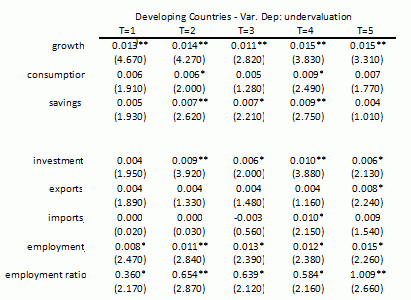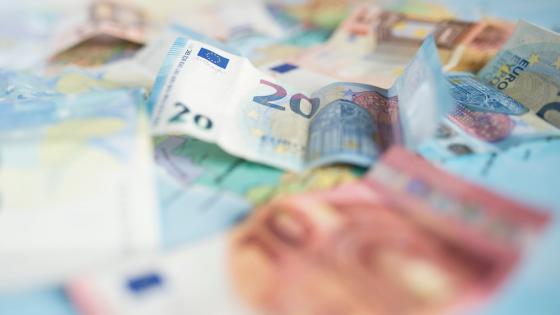The European predicament is:
- Financial (large debt stocks); and
- Real (large fiscal and current-account flow gaps).
A solution to just one of these is likely to be inadequate. A solution, for example, that focuses solely on debt restructuring would be incomplete if not complemented with a plan to recover price competitiveness and growth to fix the real problem.
Eurozone leaders fail to show the political will to move to a fiscal union (the missing piece in the euro puzzle) and insist on an ‘internal devaluation’ (fiscal adjustment and big wage cuts). This trajectory looks politically unfeasible and economically self-defeating. In this context, euro exit is getting increased attention as a means of boosting external demand while avoiding painful nominal cuts.1
The comparison that is continually referred to is Argentina’s 2002 devaluation. Many economists point to the country's swift recovery and systematic outperformance – even relative to its South American neighbours that benefited from historically high terms of trade – and attribute the results to the newly gained competitiveness from a depreciated exchange rate (see for example Blejer and Yeyati 2010, Cavallo and Cottani 2010, and Cavallo 2011 on this site). But to what extent was the devaluation boost really about competitiveness?
Wealth transfers: The Díaz Alejandro effect, in reverse
In a paper four years ago, my co-author and I found no evidence that exchange-rate intervention leads to either an increase in real exports or a decline in real imports (Levy Yeyati and Sturzenegger 2007).2 However, the paper did find a benign effect on long-term growth, arising from greater savings and investment that coincided with lower real wages and a concomitant increase in the ratio of capital to labour income.
A related paper (Gluzmann et al 2007) proposed a simple exercise to illustrate this pattern – panel regressions on an undervaluation index (plus other controls) of, alternatively, the real growth rate of GDP, consumption, investment, savings, exports, and imports, plus the growth of employment and the employment ratio.3 The results for developing countries (reproduced here) suggest, again, that undervaluation enhances growth with increases in savings and investment, as well as employment, rather than the expected widening of the real trade balance.
Source: Gluzmann et al (2007). T = n indicates that regressions were run using n-year averages.
The interpretation proposed in these two papers points to the role of internal funds (from lower labour costs and enhanced profitability) as a driver of creditless recoveries (Calvo et al, 2006). The argument relates to Díaz Alejandro’s (1965) contractionary view of currency undervaluation in an agricultural society, with a twist – whereas in the original story the winners from the devaluation spend their windfall income in foreign assets (hence, the depressed aggregate demand and the output contraction), in emerging economies those funds are partially reinvested in local assets (real estate, capital goods) making up for anaemic bank credit.
While this mechanism may apply, in principle, to any exogenously driven change in the real exchange rate, it is likely to be stronger in a crisis context where unemployment limits wage adjustments and inflation, maximising the real dividends of a nominal devaluation. Argentina 2002 is a case in point. The floating of the peso may have fostered import substitution and non-traditional exports, and lowered real wages favouring labour-intensive activities. But its real kick came from its contribution to the wealth transfer typical of all ‘successful’ currency collapses.
Pesification and debt dilution: The positive balance-sheet effect
If transfers to those with a greater propensity to save and invest (ie the corporate sector and the rich) are not unusual in post-crisis bailouts, Argentina´s devaluation-pesification combo turbo-charged the dilution machine, adding to its propelling power.
The maths is simple. Take an Argentinean company that owed $10 million to the bank at the end of 2001; six months later, with domestic liabilities ‘pesified’ (ie, converted to the local currency at the pre-crisis one-to-one parity) and the exchange rate at four pesos to the dollar, the same corporate debtor saw its dollar debt reduced to $2.5 million (a 75% haircut).4 The resulting debt dilution, coupled with depressed wages and subsidised utility prices, provided the internal funds needed to fuel investment, which was not driven by external demand but rather by extraordinarily high corporate profits.
Moreover, while Argentina’s corporations may have been short dollars at the time of the crisis, their owners were mostly long – the reflection of a large (and largely underreported) stock of foreign assets abroad.5 These dollarised savings provided the ammunition for bargain hunting in the aftermath of the devaluation and now help explain the swift rebound of real-estate prices and residential construction, one of the drivers of the Argentinean recovery.
Thus, while a devaluation of a financially dollarised economy brings devastating balance-sheet effects on dollar debtors, the de jure pesification of financial obligations (perhaps the only way to avoid massive defaults on domestic contracts) inverts the balance – debtors benefit from debt dilution at the expense of creditors. In much the same way as inflation helps reduce real wages, pesification helps restructure debts avoiding bankruptcy costs.
The implications for the Eurozone
What does all this tell us about Europe? Most analysts would agree that a ‘de-euroisation’ would almost immediately trigger a debt default due to balance-sheet effects. But what about the converse? Would an exit to a new currency solve the competitiveness gap, once default is inevitable?
Based on the Argentinean example, the answer is a qualified yes. A new currency by itself is unlikely to reignite growth –particularly in this unfavourable global environment. It is the conversion of financial contracts to the depreciating currency at a one-to-one parity that could do the trick, rendering corporations free from the euro debt overhang and ready to spend.
Is this a free lunch? No. In principle, euro creditors at the other side of the de-euroised contracts would be deprived of considerable value: A devaluation would make a euro depositor unexpectedly rich; a conversion to the new currency takes that away from him. One could argue whether these extraordinary rents are indeed fair from an equity perspective.6 At any rate, the fact that it entails a transfer of contingent valuation gains rather than actual wealth certainly makes the de-euroisation process easier to instrument.
Is it optimal? Hard to tell. A euro exit would most likely bring, among other plagues, a deepening of the triple bank, debt, and currency run (Levy Yeyati et al 2011) and, as asset holders move to redenominate their savings in a hard currency, would require a deposit freeze as well as capital and exchange-rate controls (Levy Yeyati and Blejer 2011). Against this dismal backdrop, a European fiscal union appears a less excruciating way to release financial stress, with the additional benefit of preserving the euro.
However, if a union does not materialise, the “Argentine solution” should not be misconstrued. It is not necessarily through a virtuous competitiveness effect but rather through a less appealing combination of regressive wealth transfers and euro debt dilution that the new currency may prove a traumatic but ultimately effective last-resort recipe to jumpstart debt-laden European economies.
References
Blejer, Mario, and Eduardo Levy Yeyati (2010), “Leaving the euro: What’s in the Box?”, VoxEU.org, 21 July.
Calvo, Guillermo, Alejandro Izquierdo, and Ernesto Talvi (2006), “Phoenix miracles in emerging markets: Recovery without credit from systemic financial crises”, American Economic Review, 96(2):405-410.
Cavallo, Domingo and Joaquín Cottani (2010), “Making fiscal consolidation work in Greece, Portugal, And Spain: Some lessons from Argentina” VoxEU.org, 7 May.
Cavallo, Domingo (2011) “Looking at Greece in the Argentinean mirror” VoxEU.org, 15 July.
Feldstein, Martin (2010), “Let Greece take a Eurozone ‘holiday’”, Financial Times, 16 February.
Gluzmann, Pablo, Eduardo Levy Yeyati, and Federico Sturzenegger (2007), “Exchange Rate Undervaluation and Economic Growth: Díaz Alejandro (1965) Revisited”, Universidad Torcuato Di Tella.
Halac, Marina, and Sergio Schmukler (2004), “Distributional Effects of Crises: The Financial Channel Economía - Volume 5, Number 1”, Fall 2004:1-67
Levy Yeyati, Eduardo, and Federico Sturzenegger (2007), “Fear of Apperication”, World Bank Policy Research Working Paper No. 4387.
Levy Yeyati, Eduardo, Maria Soledad Martinez Peria, and Sergio Schmukler (2011), “Triplet crises and the ghost of the new drachma”, VoxEU.org, 29 June.
Rodrik, Dani (2007). "The Real Exchange Rate and Economic Growth: Theory and Evidence", Working Paper 2008-0141, Weatherhead Center for International Affairs, Harvard University.
Spector, Horacio (2009), “Don’t Cry for Me Argentina: Economic Crises and the Restructuring of Financial Property”, Fordham Journal of Corporate & Financial Law, 14:4.
1 Martin Feldstein, for instance, has suggested that Greece take a ‘holiday’ from the Eurozone and re-enter with a depreciated nominal exchange rate (see Feldstein 2010 and Baldwin and Wyplosz 2010).
2 Naturally, the nominal trade balance may improve with a devaluation due to the associated relative-price effects.
3 Following Rodrik(2007), we compute an index of overvaluation in three steps. First, we use data on exchange rates and PPP conversion factors (PPPit) to calculate a “real” exchange rate (RERit) in country i at time t as
.
Next, we correct for the Balassa-Samuelson (BS) effect by regressing RER on per-capita GDP and a time effect. Finally, we compute undervaluation (UNDERVAL) as the difference between the actual and the BS –adjusted real exchange rate (the fit from the previous regression), so that values above one indicate that the currency is undervalued.
4 External obligations that could not be pesified under Argentine Law were restructured under the umbrella of the sovereign default and the imposition of capital controls that restricted debt service abroad.
5 This assets include both the fruits of capital outflows in normal times, and the accelerated flight in 2001, which, as Halac and Schmukler (2004) suggest, may also have been benefitted high-income households and firms.
6 Spector (2009) offers a through analysis of this point from a legal perspective, in the context of the Argentine pesification.




